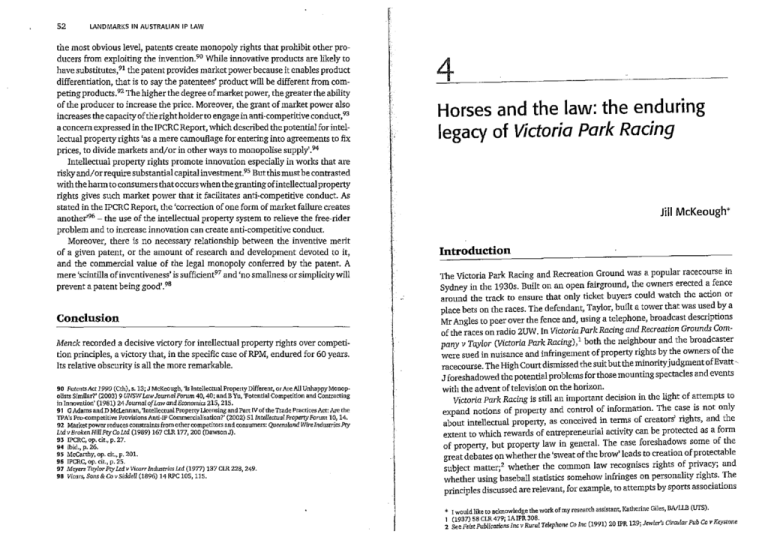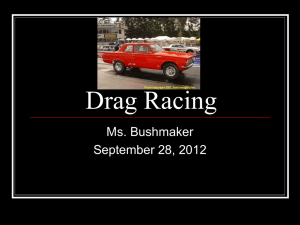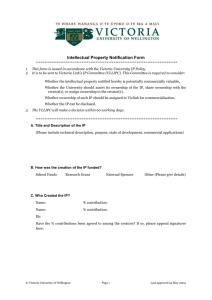the enduring legacy of Victoria Park Racing
advertisement

52 LANDMARKS IN AUSTRALIAN IP LAW the most obvious level, patents create monopoly rights that prohibit other producers from exploiting the invention.P? While innovative products are likely to have substitutes.?' the patent provides market power because it enables product differentiation, that is to say the patentees' product will be different from competing products. 92 The higher the degree of market power, the greater the ability of the producer to increase the price. Moreover, the grant of market power also increases the capacity of the right holder to engage in anti-competitive conduct.P a concern expressed in the IPCRCReport, which described the potential for intellectual property rights 'as a mere camouflage for enteting into agreements to fix prices, to divide markets and!or in other ways to monopolise supply'. 94 Intellectual property rights promote innovation especially in works that are risky and!or require substantial capital investment." But this must be contrasted with the harm to consumers that occurs when the granting ofintellectualproperty rights gives such market power that it facilitates anti-competitive conduct. AB stated in the IPCRCReport, the 'correction of one form of market failure creates another'f" - the use of the intellectual property system to relieve the free-rider 4 Horses and the law: the enduring legacy of Victoria Park Racing Jill McKeough' problem and to increase innovation can create anti-competitive conduct. Moreover, there is no necessary relationship between the inventive merit of a given patent, or the amount of research and development devoted to it, and the commercial value of the legal monopoly conferred by the patent. A mere 'scintilla ofinventiveness' is sufficient'? and 'no smallness or simplicity will prevent a patent being good'.98 Conclusion Menck recorded a decisive victory for intellectual property rights over competi- tion principles, a victory that, in the specific case of RPM, endured for 60 years. Its relative obscurity is all the more remarkable. 90 PatentsAct 1990 (Cth), s. 13; J McKeough, 'IsIntellectual PropertyDifferent, orAreAll UnhappyMonopolists Similar?'(2003) 9 UNSW LawJournalForum 40, 40; and B Yu, 'PotentialCompetitionand Contracting in Innovation' (1981) 24JoumalojLawandEconomics 215, 215. 91 G Adams and D Mclennan, 'IntellectualPropertyLicensingand PartN of the TradePracticesAct: Are the TPA's Pro-competitive Provisions Anti-IP Commercialisation?'(2002) 51 IntellectualProperty Forum 10, 14. 92 Marketpower reduces constraints fromother competitors and consumers: Queensland WireIndustriesPty Ltdv Broken HillPty CoLtd (1989) 167 CLR 177, 200 (DawsonJ). 93 IPCRC, op. cit., p. 27. 94 fbid., p. 26. 9S McCarthy, op. cit., p. 201. 96 IPCRC, op. cir., p. 25. 97 Meyers TaylorPty Lcd v Vicarr Industries Lcd (1977) 137 CLR 228, 249. 9B Vicars, Sons & Cov Siddell (1896) 14 RPC lOS, 115. Introduction The Victoria Park Racing and Recreation Ground was a popular racecourse in Sydney in the 1930s. Built on an open fairground, the owners erected a.fence around the track to ensure that only ticket buyers could watch the action or place bets on the races. The defendant, Taylor, built a tower that was uS:d by a Mr Angles to peer over the fence and, using a telephone, broadcast descriptions of the races on radio 2UW. In Victoria Park Racing and Recreation Grounds Company v Taylor (Victoria Park Racing), 1 both the neighbour and the broadcaster were sued in nuisance and infringement of property rights by the owners of the racecourse. The High Court dismissed the suit but the minorityjudgment of Evatt·· J foreshadowed the potential problems for those mounting spectacles and events with the advent of television on the horizon. Victoria Park Racing is still an important decision in the light of attempts to expand notions of property and control of information. The ca~e is not only about intellectual property, as conceived in terms of creators' rights, and the extent to which rewards of entrepreneurial activity can be protected as a form of property, but property law in general. The case foreshadows some of the great debates on whether the 'sweat of the brow' leads to creation of protectable subject matter," whether the common law recognises rights o~ pri:acy; and whether using baseball statistics somehow infringes on personality nghts. The principles discussed are relevant, for example, to attempts by sports associations * I would like to acknowledge the work of my research assistant, KatherineGiles, BNIl.B (UTS). 1 (1937) 58CLR479; lAIPR308. , . 2 See FeistPublications Incv RuralTelephone Co Inc (1991) 20 IPR129; Jewlers CIrcular Pub Co v Keystone











